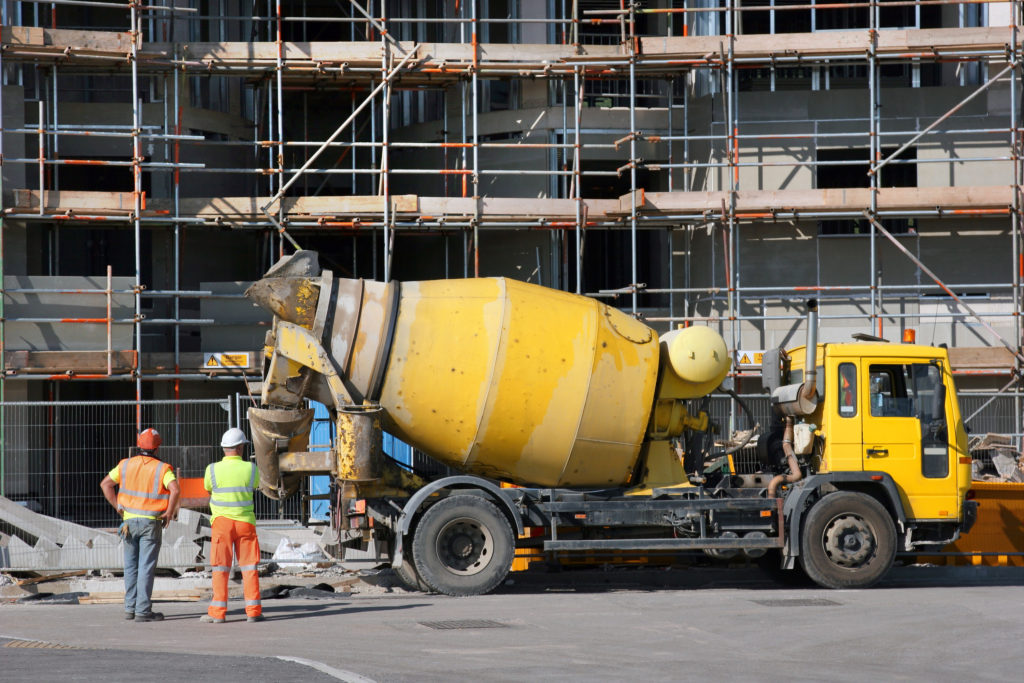The Ready Mix Truck: Concrete Mixer Trucks and their Role on the Construction Site
Any construction project is the fusion of vision, engineering, human labor, skill, and the right machinery. Construction equipment is not a sexy topic, but it is essential for getting the job done and makes building incredible structures—schools, homes, office buildings, and skyscrapers— possible. When it comes to concrete construction, the ready-mix truck is essential for construction work and getting the job done.
The ready-mix trucks (or concrete mixer trucks) are just another part of the crew. Here’s what you never knew about these great vehicles.
Construction Equipment for Concrete Construction
There is no shortage of heavy-duty equipment at a construction site. Cranes are tasked with carrying heavy material from a low point to a high point while bulldozers push and grade soil. The cement mixer, a mammoth-like vehicle capable of carrying up to 30,000 pounds fully loaded, is not often the hot topic of conversation at the dinner table. And yet, given today’s need for trusted concrete work for foundations, sidewalks, driveways, flooring, and columns, the ready-mixer holds the liquid gold.
Concrete is made from mixing cement, water, and aggregates. The purity of the aggregates has a direct effect on the final result of the concrete. These aggregates are the basic components of the quality building material. Cement is the final binder, which is in charge of setting and hardening the mixture to create the final result. And the combination of these materials creates one of the most ubiquitous building materials in modern-day construction.
The ratio of the materials determines the strength and integrity of the concrete mixture and it can all happen in the revolving belly of the ready mix truck. Construction projects may vary and require different grades or compressive strength.
What is the Role of the Concrete Mixer?
These concrete mixers prepare and hold the concrete mixtures en route to the job site. They make the construction process efficient and facilitate access to concrete without compromising quality. Some concrete mixer trucks will carry and dispense the concrete mixture on the construction site directly.
At the onset of the 20th century, the first patent for the “Mortar Mixer” emerged and became the first iteration of what would become the ready mix truck as we know it today. This patent happened in Germany and consisted of a front axle and wagon wheels. The horse-drawn vehicle had a makeshift drum that rolled as it moved and thus created the mixing motion. After this, a hexagonal drum was implemented. After a few decades and the increased demand for vehicles (and thus roads), concrete construction ramped up. Inventor Charles Ball came up with a next-generation mixer that improved the revolving drum and was the standard for many years after that.
During World War II, construction and engineering went into full swing and concrete work became an essential part of the war effort. So by the 1940s, the revolving drum with a heavy-duty vehicle merged and took mobile concrete mixing to the next level implementing a robust engine, truck frame, and rotating mixer.
How Does the Ready Mix Truck Work?
With technological evolution, the basic mixer design has changed and transformed over time. Most of these trucks transport concrete from the plant to the site of the construction. Depending on the task at hand, the concrete can be mixed at the plant or factory or can be mixed in the truck.
The rotating barrel keeps the concrete mixture as a liquid so that it is ready to pour when it arrives at the construction site. The concrete should not be allowed to harden inside the barrel, as that is a very difficult task to deal with.
Some concrete mixers will have an added water tank in the truck. This allows for more control of when to add the water to the mix. So while the crew is heading down to the construction site, the drum is keeping the dry ingredients mixing. When the time is right, the driver can add water to the mix.
Types of Concrete Mixers
Concrete mixers come in different types. There are predominantly two different types of mixers that operate in a construction site.
- Batch mixer: These mixers focus on preparing concrete one batch at a time. There is a lot of control in regards to the angle of the drum and the blades. For smaller or medium-sized construction jobs, these are the likely go-to. These batch mixers can have different types of drums including the tilting drum, non-tilting drum, reversing drum, or pan mixer.
- Continuous mixer: These are ideal for larger tasks, as they continuously mix the concrete so that it stays fresh. So the drum continues mixing as construction workers require the material. This way, it is not just sitting there for long periods.
Whether it’s a batch mixer or a continuous mixer, you can rest assured that these are powerful beasts. Not only can they lug around the 30,000 pounds of concrete but they carry their own weight and most haul that over rough terrain. That is no engine for the faint of heart. These are impressive vehicles.
The NM Ready Mix is Ready to Help Get Your Project Started
Whether you are working on a small or large construction project, getting quality materials delivered is our top priority. NM Ready Mix is all about those fine aggregates and high-grade concrete. We provide concrete materials for DIY workers building a backyard patio to government contractors erecting a major road or highway, and any other construction job imaginable.
Be ready for your next construction project. Call NM Ready Mix today.

